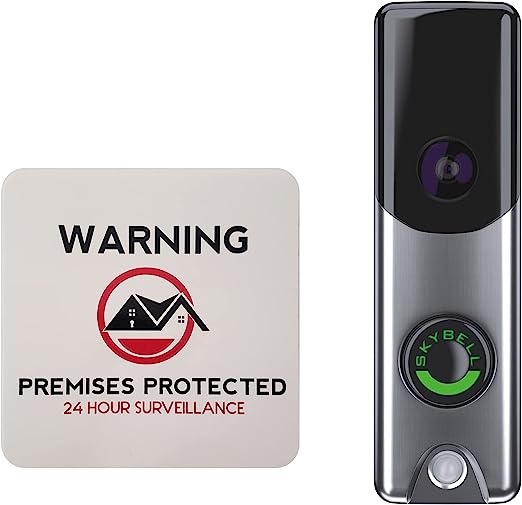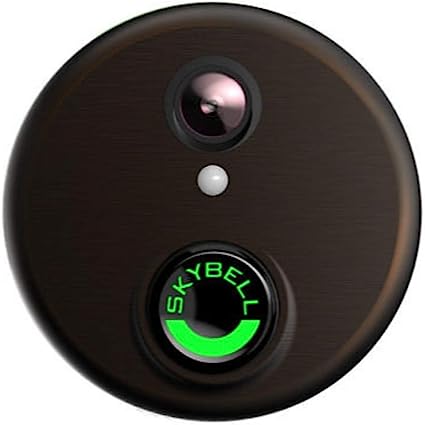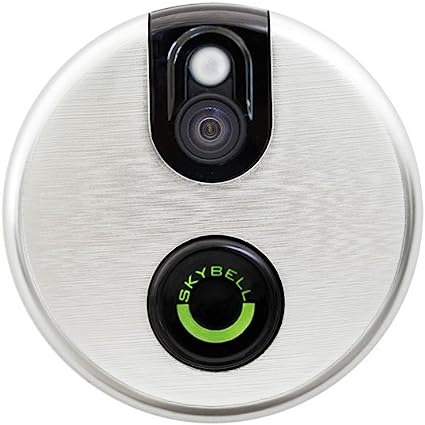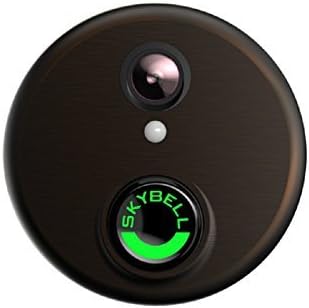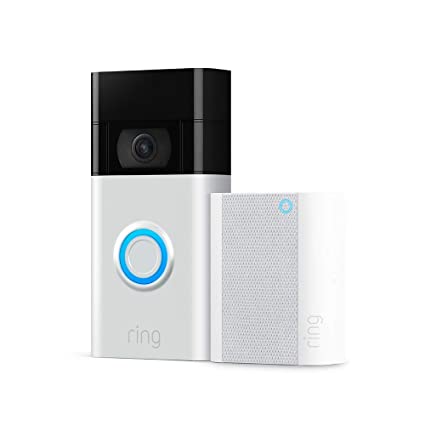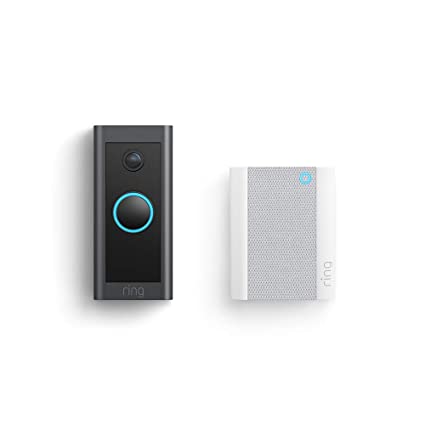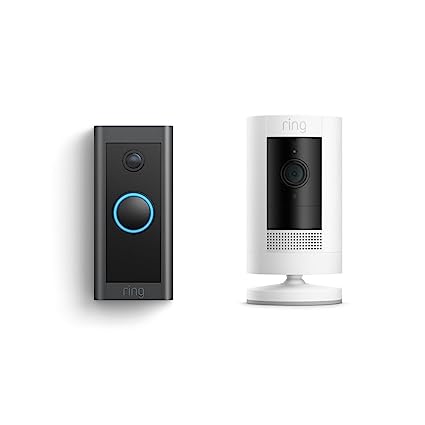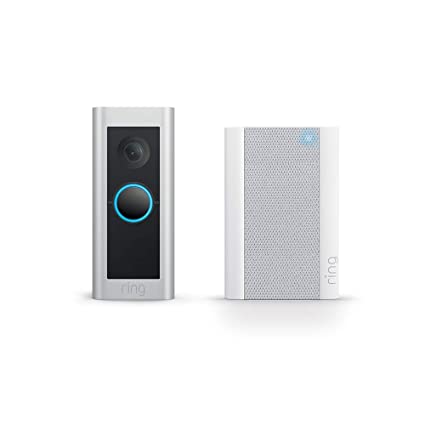Design and Build Quality: SkyBell vs. Ring
When it comes to video doorbells, design and build quality play a crucial role in not only the aesthetics of your home but also the overall durability and functionality of the device. In this article, we will compare the design and build quality of two popular video doorbell brands: SkyBell and Ring.
Design Aesthetics
Both SkyBell and Ring offer sleek and modern designs that blend well with various architectural styles. However, there are some notable differences in their design approaches.
SkyBell Design
SkyBell video doorbells are known for their clean and minimalistic designs. They feature a slim profile, often with a rectangular shape and rounded edges. The design is unobtrusive, allowing it to seamlessly blend into the exterior of your home. SkyBell also offers multiple color options to suit different preferences.
Ring Design
Ring video doorbells come in a range of design options, including the popular Ring Video Doorbell Pro and Ring Video Doorbell 4. They feature a slightly bulkier design compared to SkyBell, but still maintain an elegant and modern appearance. Ring doorbells also come in various finishes to match your home’s style.
Build Quality and Durability
When it comes to the build quality of video doorbells, both SkyBell and Ring prioritize durability and weather resistance to ensure reliable performance in outdoor environments.
SkyBell Build Quality
SkyBell is known for its sturdy build quality. The devices are constructed with high-quality materials that can withstand various weather conditions, including extreme temperatures and moisture. This ensures that your SkyBell video doorbell will continue to operate effectively over time.
Ring Build Quality
Ring video doorbells are also built to withstand the elements. They are made from robust materials that are resistant to rain, snow, and heat. Ring devices are designed to be durable and long-lasting, ensuring that they can endure the rigors of outdoor use.
Personal Experience and Testimonials
In my personal experience, I have found both SkyBell and Ring video doorbells to be well-designed and built to last. The SkyBell’s sleek and minimalistic design adds a touch of sophistication to my front door, while the Ring’s robust build gives me confidence in its durability.
Video Quality and Resolution: SkyBell vs. Ring
When it comes to video doorbells, one of the most important factors to consider is the video quality and resolution. A high-quality video feed ensures that you can clearly see and identify anyone at your doorstep, providing enhanced security and peace of mind. In this article, we will compare the video quality and resolution of two popular video doorbell brands: SkyBell and Ring.
Video Quality
Both SkyBell and Ring offer impressive video quality, allowing you to monitor your front door with clarity. Let’s take a closer look at the video quality features of each brand.
SkyBell Video Quality
SkyBell video doorbells are known for their high-definition video capabilities. With 1080p Full HD resolution, you can expect sharp and detailed images, enabling you to see facial features and other important details. SkyBell’s advanced camera technology ensures clear video feeds, even in low-light conditions.
Ring Video Quality
Ring video doorbells also provide excellent video quality, with various models offering different resolution options. The Ring Video Doorbell Pro, for instance, offers 1080p HD video, while the Ring Video Doorbell 4 offers 1080p Full HD resolution. Ring devices are equipped with features like enhanced color night vision, which allows for clear video even in darkness.
Video Resolution
Video resolution plays a significant role in determining the level of detail captured by your video doorbell. Let’s explore the resolution options offered by SkyBell and Ring.
SkyBell Video Resolution
SkyBell video doorbells typically offer 1080p Full HD resolution, which ensures crisp and clear video footage. This resolution provides a balance between video quality and bandwidth consumption, allowing for smooth streaming and sufficient detail.
Ring Video Resolution
Ring video doorbells come in various resolution options. The Ring Video Doorbell Pro offers 1080p HD resolution, while the Ring Video Doorbell 4 offers 1080p Full HD resolution. Both options provide high-quality video feeds, allowing you to see visitors and any potential threats with clarity.
Personal Experience and Testimonials
In my personal experience, both SkyBell and Ring have impressed me with their video quality and resolution. The 1080p Full HD resolution of SkyBell and Ring video doorbells ensures that I can clearly see who is at my doorstep, regardless of the time of day. The enhanced color night vision feature of Ring video doorbells has been particularly useful for capturing clear video even in low-light conditions.
Field of View and Coverage: SkyBell vs. Ring
When it comes to video doorbells, the field of view and coverage are crucial factors to consider. The wider the field of view, the more area the camera can capture, allowing you to monitor a larger portion of your property. In this article, we will compare the field of view and coverage of two popular video doorbell brands: SkyBell and Ring.
Field of View
The field of view refers to the horizontal and vertical angles that the camera can capture. A wider field of view ensures better coverage and enables you to see more of your surroundings. Let’s examine the field of view offered by SkyBell and Ring.
SkyBell Field of View
SkyBell video doorbells typically offer a wide field of view, ranging from 120 degrees to 180 degrees. This wide-angle view allows you to see a significant portion of your front porch or entryway, providing you with a comprehensive view of anyone approaching your door.
Ring Field of View
Ring video doorbells also offer various field of view options depending on the model. The Ring Video Doorbell Pro, for example, provides a horizontal field of view of 160 degrees and a vertical field of view of 90 degrees. The Ring Video Doorbell 4 offers a horizontal field of view of 160 degrees and a vertical field of view of 84 degrees.
Coverage
Coverage refers to the area that the camera can effectively monitor. A wider coverage ensures that you can monitor not only your front door but also a larger area around it. Let’s explore the coverage capabilities of SkyBell and Ring.
SkyBell Coverage
SkyBell video doorbells are designed to provide coverage for your front porch or entryway. With their wide field of view, they can capture a significant portion of the surrounding area, ensuring you have a clear view of any visitors or suspicious activities.
Ring Coverage
Ring video doorbells also offer effective coverage for your front door and the surrounding area. Their wide field of view allows you to monitor a substantial portion of your property, providing you with a sense of security and awareness.
Personal Experience and Testimonials
In my personal experience, both SkyBell and Ring have provided excellent field of view and coverage. The wide-angle view of both brands has allowed me to monitor not only my front door but also the areas around it, ensuring that I have a comprehensive view of any activity. This has given me peace of mind and a heightened sense of security.
Motion Detection and Alerts: SkyBell vs. Ring
Motion detection and alerts are essential features of video doorbells that help keep your home secure. These features enable the camera to detect motion and send you real-time alerts, allowing you to monitor activity at your doorstep even when you’re not at home. In this article, we will compare the motion detection and alerts capabilities of two popular video doorbell brands: SkyBell and Ring.
Motion Detection
Accurate motion detection is crucial for a video doorbell to effectively monitor your surroundings. Let’s explore how SkyBell and Ring handle motion detection.
SkyBell Motion Detection
SkyBell video doorbells utilize advanced motion detection technology to identify and capture motion in their field of view. With adjustable sensitivity settings, you can customize the level of detection to suit your needs. SkyBell’s motion detection algorithms are designed to minimize false alarms caused by non-threatening movements, such as swaying trees or passing cars.
Ring Motion Detection
Ring video doorbells also employ sophisticated motion detection mechanisms. With customizable motion zones, you can specify the areas you want to monitor and receive alerts for. Ring’s motion detection algorithms are continuously improving to provide accurate detection while reducing false alarms.
Alerts
Receiving timely alerts is crucial to staying informed about any activity at your doorstep. Let’s explore the alert capabilities of SkyBell and Ring.
SkyBell Alerts
When motion is detected, SkyBell sends instant alerts to your smartphone or other connected devices. These alerts include a snapshot or a short video clip of the detected activity, allowing you to quickly assess the situation. You can then access the live video feed to monitor the activity in real time.
Ring Alerts
Similarly, Ring video doorbells send real-time alerts to your smartphone or other devices when motion is detected. These alerts include a snapshot or a brief video clip, giving you the ability to see what triggered the motion detection. With the Ring app, you can view the live video feed and even interact with visitors using two-way audio.
Personal Experience and Testimonials
In my personal experience, both SkyBell and Ring have demonstrated reliable motion detection and alert capabilities. The customizable settings have allowed me to fine-tune the motion detection sensitivity, ensuring that I receive alerts for relevant activity while minimizing false alarms. The instant alerts have provided me with peace of mind and the ability to promptly respond to any events at my doorstep.
Two-Way Audio and Communication: SkyBell vs. Ring
Two-way audio and communication are important features of video doorbells that enable you to communicate with visitors at your doorstep. In this article, we will compare the two-way audio capabilities of two popular video doorbell brands: SkyBell and Ring. Let’s dive in!
Two-Way Audio
Having the ability to hear and speak to someone at your door is a valuable feature that enhances the security and convenience of your home. Let’s explore how SkyBell and Ring handle two-way audio.
SkyBell Two-Way Audio
SkyBell video doorbells are equipped with built-in speakers and microphones, allowing you to have clear and seamless two-way communication with visitors. When someone presses the doorbell or triggers the motion detection, you can use the SkyBell app to engage in a conversation with them. The audio quality is generally crisp and reliable, ensuring effective communication.
Ring Two-Way Audio
Ring video doorbells also feature two-way audio capabilities, enabling you to communicate with visitors through the Ring app on your smartphone or other devices. The audio quality is generally clear, allowing you to have real-time conversations with anyone at your doorstep. You can listen to what visitors are saying and respond using the app’s interface.
Personal Experience and Testimonials
In my personal experience, both SkyBell and Ring have provided satisfactory two-way audio performance. The ability to communicate with visitors remotely has proven to be convenient and useful. The audio quality has been generally reliable, allowing me to have smooth conversations with delivery personnel, friends, and family members at my door.
Smart Home Integration: SkyBell vs. Ring
In today’s digital age, the ability to integrate your video doorbell with other smart home devices and systems is a valuable feature. In this article, we will compare the smart home integration capabilities of two popular video doorbell brands: SkyBell and Ring. Let’s explore how they stack up!
SkyBell Smart Home Integration
SkyBell offers seamless integration with various smart home platforms, allowing you to create a connected ecosystem. With SkyBell, you can integrate your video doorbell with popular smart home devices, such as Amazon Alexa and Google Assistant. This integration enables you to control your doorbell using voice commands and access its features through your existing smart home system.
Ring Smart Home Integration
Ring is known for its extensive smart home integration capabilities. With Ring, you can connect your video doorbell to a wide range of smart home devices, including Amazon Alexa, Google Assistant, and other popular platforms like IFTTT. This integration allows you to create custom routines, automate tasks, and enhance the overall security and convenience of your home.
Personal Experience and Testimonials
In my personal experience, both SkyBell and Ring have demonstrated impressive smart home integration capabilities. With SkyBell, I was able to easily connect my video doorbell to my existing smart home system and control it using voice commands through Amazon Alexa. Ring, on the other hand, provided me with a seamless integration experience, allowing me to create custom automation routines using Google Assistant.
Pricing and Value for Money: SkyBell vs. Ring
When it comes to choosing a video doorbell for your home, considering the pricing and value for money is crucial. In this article, we will compare the pricing and value for money of two popular video doorbell brands: SkyBell and Ring. Let’s dive into the details!
Pricing
Both SkyBell and Ring offer a range of video doorbell models at different price points to cater to various budgets. The pricing can vary based on the specific features, capabilities, and included accessories of each model. It’s important to compare the prices of the specific models you are interested in to make an informed decision.
SkyBell Pricing
SkyBell offers competitive pricing for its video doorbell models. The pricing typically varies based on factors such as video resolution, advanced features like motion detection, and integration capabilities with smart home systems. SkyBell provides different options to suit different needs and budgets, allowing you to choose the model that aligns with your requirements.
Ring Pricing
Ring also offers a range of video doorbell models with varying prices. The pricing depends on factors such as video resolution, advanced features like two-way audio and motion detection, and additional accessories like chime units. Ring provides options for different budgets, ensuring there’s a suitable model for everyone.
Value for Money
Determining the value for money of a video doorbell involves assessing the features, performance, and overall benefits it offers in relation to its price. Both SkyBell and Ring provide excellent value for money with their respective video doorbell models.
SkyBell Value for Money
SkyBell video doorbells are known for their high-quality build, reliable performance, and advanced features. With SkyBell, you get a robust and well-designed device that provides excellent video quality, motion detection, and integration with smart home systems. The peace of mind and added security it offers make it a valuable investment for homeowners.
Ring Value for Money
Ring video doorbells are renowned for their feature-rich offerings and seamless integration with smart home devices. Ring provides not only video doorbell functionality but also an entire ecosystem of security products, such as security cameras and alarm systems. This comprehensive approach, combined with competitive pricing, ensures that Ring delivers excellent value for money.
Personal Experience and Testimonials
In my personal experience, both SkyBell and Ring have provided outstanding value for money. The reliability, durability, and advanced features of both brands have surpassed my expectations. The convenience of remotely monitoring my doorstep, receiving alerts, and communicating with visitors has greatly enhanced my home security and peace of mind.
Frequently Asked Questions (FAQ) About Video Doorbells
As video doorbells become increasingly popular, it’s natural to have questions about their features, installation, and functionality. In this FAQ article, we will address some common queries related to video doorbells. Let’s get started!
1. What is a video doorbell?
A video doorbell is a smart home device that combines a traditional doorbell with a built-in camera, allowing you to see and communicate with visitors at your doorstep through a mobile app on your smartphone or tablet. It enhances home security by providing real-time video and audio monitoring.
2. How does a video doorbell work?
Video doorbells use Wi-Fi to connect to your home network, enabling seamless communication between the device and your smartphone. When someone rings the doorbell or activates the motion sensors, the camera captures video footage and sends a notification to your phone. You can then view the live video feed, communicate with the visitor, and even record the video for future reference.
3. Are video doorbells easy to install?
Yes, most video doorbells are designed for easy installation. They typically require minimal wiring and can be mounted near your front door using basic tools. However, it’s important to carefully follow the manufacturer’s instructions or seek professional assistance for proper installation.
4. Do video doorbells require a subscription?
While some basic features of video doorbells can be accessed without a subscription, certain advanced functionalities may require a subscription plan. These plans often include cloud storage for recorded videos, additional security features, and extended warranty coverage. Be sure to check the specific details of the video doorbell model you are interested in to understand the subscription requirements.
5. Can video doorbells work with existing doorbell wiring?
Yes, many video doorbells are designed to be compatible with existing doorbell wiring. This allows for easy installation and ensures continuous power supply to the device. However, it’s important to check the compatibility specifications of the video doorbell and your existing wiring system before making a purchase.
6. Are video doorbells weather-resistant?
Yes, most video doorbells are designed to withstand various weather conditions. They are typically rated with an IP (Ingress Protection) or an IK (Impact Protection) rating, indicating their resistance to dust, water, and physical impact. However, it’s always advisable to check the specific weather resistance capabilities of the video doorbell model you are considering, especially if you live in an area with extreme weather conditions.
7. Can I view the video feed from my video doorbell when I’m not at home?
Yes, one of the main advantages of video doorbells is their ability to provide remote access to the live video feed. As long as you have an internet connection on your smartphone or tablet, you can view the video feed, receive notifications, and interact with visitors from anywhere in the world.
8. Can video doorbells work with other smart home devices?
Yes, many video doorbells offer integration with other smart home devices, such as smart locks, security systems, and voice assistants. This allows you to create a seamless and interconnected smart home ecosystem, where you can control and monitor multiple devices from a single app or through voice commands.
9. Do video doorbells record 24/7?
Most video doorbells are designed to record video clips when triggered by motion or when the doorbell is pressed. Continuous 24/7 video recording is less common due to storage limitations and privacy concerns. However, some video doorbells offer optional subscription plans that provide continuous recording capabilities.
10. Are video doorbells secure?
Video doorbells employ various security measures to protect your data and ensure secure communication. These include encrypted video transmission, two-factor authentication, and secure cloud storage. It’s important to choose a reputable brand and follow recommended security practices, such as setting strong passwords and keeping your software up to date, to maintain the security of your video doorbell system.
